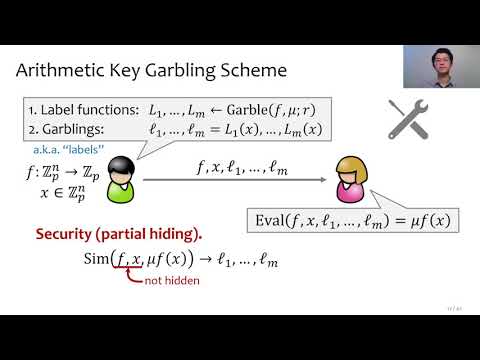Welcome to the resource topic for 2020/318
Title:
Compact Adaptively Secure ABE from k-Lin: Beyond NC1 and towards NL
Authors: Huijia Lin, Ji Luo
Abstract:We present a new general framework for constructing compact and adaptively secure attribute-based encryption (ABE) schemes from k-Lin in asymmetric bilinear pairing groups. Previously, the only construction [Kowalczyk and Wee, Eurocrypt '19] that simultaneously achieves compactness and adaptive security from static assumptions supports policies represented by Boolean formulae. Our framework enables supporting more expressive policies represented by arithmetic branching programs. Our framework extends to ABE for policies represented by uniform models of computation such as Turing machines. Such policies enjoy the feature of being applicable to attributes of arbitrary lengths. We obtain the first compact adaptively secure ABE for deterministic and non-deterministic finite automata (DFA and NFA) from k-Lin, previously unknown from any static assumptions. Beyond finite automata, we obtain the first ABE for large classes of uniform computation, captured by deterministic and non-deterministic logspace Turing machines (the complexity classes \mathsf{L} and \mathsf{NL}) based on k-Lin. Our ABE scheme has compact secret keys of size linear in the description size of the Turing machine M. The ciphertext size grows linearly in the input length, but also linearly in the time complexity, and exponentially in the space complexity. Irrespective of compactness, we stress that our scheme is the first that supports large classes of Turing machines based solely on standard assumptions. In comparison, previous ABE for general Turing machines all rely on strong primitives related to indistinguishability obfuscation.
ePrint: https://eprint.iacr.org/2020/318
Talk: https://www.youtube.com/watch?v=nWiEOpLHCHQ
Slides: https://iacr.org/submit/files/slides/2020/eurocrypt/ec2020/385/slides.pdf
See all topics related to this paper.
Feel free to post resources that are related to this paper below.
Example resources include: implementations, explanation materials, talks, slides, links to previous discussions on other websites.
For more information, see the rules for Resource Topics .
